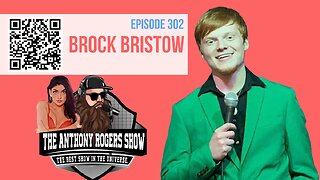Wild turkeys afraid to cross the main road
Welcome everyone. Take a look at all these wild turkeys on my property here in NH. It's late October and the snow is falling. These turkeys love to feed on my property. Not seen in this video are 2 apple trees and a berry tree with fruit all over them and on the ground outback on my property.
Toms (adult males) weigh 18-24 pounds or more; hens (females) about 10 pounds. Plumage is iridescent bronze; dark in males and tips rusty or light brown in females. Wings and fan-shaped tail show alternating dark bands. Neck and head of adult males is reddish, while females have bluish heads with more feathers.
A dewlap (fleshy growth hanging under chin), caruncles (growths located on the side and front of neck), and a snood (a fleshy projection rising above the bill) adorn males. A beard (like bristles on a broom) hangs down from the chest; typical in males and in 5% of females. Males have spurs 1/4 to 1-1/4 inch long on the lower legs.
Turkeys forage on the ground in flocks, occasionally mounting shrubs and small trees. Acorns, beechnuts, cherries, and ash seeds are primary food sources. Seeds, berries, grasses, sedges and insects are important summer foods. Turkeys eat corn, rye, oats, alfalfa, soybeans, millet, and buckwheat. Grit is important. Adults eat 90% plant matter and 10% insects. Poults eat mainly insects. In winter turkeys visit seeps; they feed on sensitive fern fertile stalks, waste corn, and persistent fruits such as barberry, rose hips, and dried apples.
Adult males gobble to attract females and to repel competing males. Both adults make a variety of noises - yelps, clucks, cackles, purrs, rattles, and gobbles. Wild Turkeys are polygamous. Toms gather a harem of hens by gobbling, strutting, and using dramatic plumage displays. Mating occurs in April and nesting in May. The nest is typically a small depression lined with dead leaves. Nests are located in areas with a well-developed understory or in cut-over areas with slash.
-
![6.5 Grendel vs. 6mm ARC vs. .224 Valkyrie [Which is Best?]](https://ak2.rmbl.ws/fw/s8/1/_/c/o/s/_cosr.Vkob-small-6.5-Grendel-vs.-6mm-ARC-vs..jpg) 5:17
5:17
Bear Creek Arsenal
22 hours ago6.5 Grendel vs. 6mm ARC vs. .224 Valkyrie [Which is Best?]
15.5K2 -
 3:36
3:36
Michael Heaver
1 day agoUK’s Block Triggers Unbelievable EU U-TURN
6.8K13 -
 48:20
48:20
Crime Circus
1 day agoFlorida Man's Nightmare: The Shocking Interrogation & Wrongful Arrest
9.34K4 -
 19:32
19:32
Crypto Crew University
16 hours agoWARNING: BITCOIN IS ABOUT TO DO SOMETHING THAT CAUSED HUGE CRASH LAST TIME – CAN IT BE AVOIDED
11K1 -
 2:59:18
2:59:18
Fresh and Fit
10 hours agoDELUSIONAL 40 yr Old Argues Men Prefer "OLDER" Women?!
127K154 -
 3:43:35
3:43:35
Alex Zedra
10 hours agoLIVE! Giving away an M249 SAW | PJ Party + Games
45.8K11 -
 29:23
29:23
Standpoint with Gabe Groisman
17 hours agoEp. 21. Can Israel "End Hamas"? IDF Brig. General Res. Amir Avivi, Founder of IDSF
47.7K51 -
 1:26:49
1:26:49
Glenn Greenwald
14 hours agoCampus Protest Propaganda Snowballs; Congress Moves to Criminalize Israel Critics | SYSTEM UPDATE #264
96.1K460 -
 1:25:44
1:25:44
The Anthony Rogers Show
19 hours agoEpisode 303 - Brock Bristow
58.1K2 -
 1:24:15
1:24:15
Mally_Mouse
10 hours agoLet's Hang!!
38.5K6